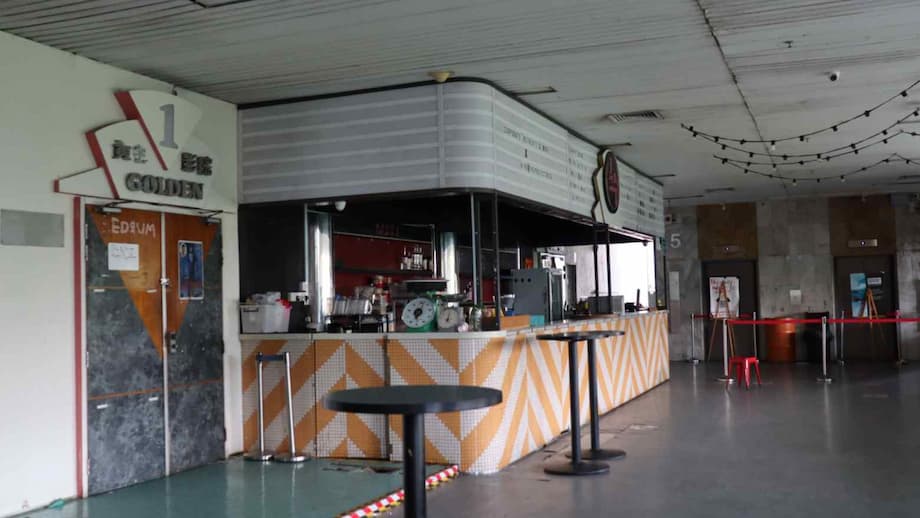A national pastime at a crossroads
For decades, Singaporeans counted on the cinema as an easy escape from the heat and a shared ritual after school or work. That habit is now under strain. A string of closures, including independent operator The Projector and the creditors’ voluntary liquidation of Cathay Cineplexes with the sudden shuttering of its final four outlets, has turned the dim glow of movie halls into an uneasy symbol of a sector in retreat. Attendance has fallen, streaming has surged, and higher operating costs have squeezed margins, leaving many venues with little room to maneuver.
- A national pastime at a crossroads
- What triggered the latest closures?
- The numbers behind the slump
- How the pandemic rewired cinema worldwide
- Why Singapore faces unique headwinds
- What other countries did differently
- How operators in Singapore are responding
- Policy levers that could help
- What this means for studios and streaming
- The human side of a market reset
- Outlook: smaller footprints, sharper focus
- Key Points
The COVID 19 pandemic did not invent these pressures, but it accelerated them. Lockdowns and capacity caps rewired viewing habits as households adopted large screens, better soundbars and a buffet of streaming services. Studios leaned harder into direct to consumer releases and shorter theatrical windows. When restrictions eased, the habit of staying in often stuck, and the economics of reopening were challenging for exhibitors that had accumulated rent and other costs during the slow years.
Singapore’s cinema footprint has shrunk and is recalibrating, even as operators invest in upgrades and alternative programming to bring patrons back. The picture is complicated by cross border competition, especially in nearby Johor Bahru where newer venues and lower prices are a draw for some Singaporeans. The question now is not whether the cinema matters, but what kind of cinema experience can win back time and wallets in a changed market.
The collapse of Cathay Cineplexes, one of the country’s longest running brands, put the industry’s pain into full view. The chain’s exit followed months of debt disputes and lease terminations, a sign of the narrow margins that define exhibition even in good times. It also highlighted how quickly consumer habits and content pipelines can shift the balance between big screen spectacle and living room comfort.
What triggered the latest closures?
Cathay Cineplexes, operated by media group mm2 Asia, ceased operations across its last four locations with immediate effect after a creditors’ voluntary liquidation was announced. The company had been negotiating with multiple landlords over arrears tied to pandemic era and post pandemic performance. Those talks failed to produce a deal that could keep the business as a going concern.
The chain’s troubles were public for months. Landlords of several outlets demanded payments ranging from seven figure sums to multimillion dollar claims. One key venue in Jurong East had its lease terminated over arrears that exceeded four million Singapore dollars. Earlier closures at West Mall and other sites foreshadowed the final wind down, even as the company tried to consolidate operations.
In recent years, Cathay had closed outlets at AMK Hub, Orchard Cineleisure, Cathay Building and Parkway Parade, while briefly picking up a site at 321 Clementi. Management had told investors that recovery was slower than expected and that the group would consider rightsizing and restructuring. The last act unfolded quickly, leaving ticket holders looking for refunds and staff facing job uncertainty.
In statements addressing individual site closures before the liquidation, mm2 Asia acknowledged the strain on the business and thanked partners that supported the cinema through difficult periods, noting that pandemic era restrictions and the sluggish rebound had weakened demand. The company also said the exhibition arm had been loss making since 2020 and that the wider group intended to focus resources on core content and live events.
Workers’ representatives moved to assist affected staff. The Singapore Manual and Mercantile Workers’ Union said it would reach out to members employed by the operator and offer guidance and support as the liquidation progressed.
mm2 Asia later framed the liquidation as part of a broader effort to stabilize finances across the group after reporting heavy losses. The company said the exhibition business had been a drag on cashflow and that exiting it could improve the overall health of the listed group.
In its communications about ongoing disruptions and closures, the company recognized the depth of the downturn that began in 2020. Executives publicly signaled a focus on new opportunities in content and events that align with demand patterns since the pandemic.
In one statement explaining the termination of a key lease, the operator summarized the strain of recent years.
mm2 Asia said the cinema business had faced severe pressures driven by the pandemic and a slow recovery, and also pointed to rising costs and changes in audience habits.
In view of the challenges facing the cinema industry since the onset of COVID 19, the cinema business has seen significant challenges and unprecedented difficulties.
After the liquidation announcement, the group said stepping away from the loss making exhibition arm was expected to improve cashflows and profitability at the group level.
Voluntary liquidation of the cinema chain is expected to improve the group’s cashflows and profitability, while we concentrate on core content and live events.
The union underscored the human impact.
The union is committed to supporting the affected members during this challenging time and will provide guidance and assistance where needed.
The numbers behind the slump
Singapore’s cinema audience has shrunk sharply since 2019. Industry tallies indicate attendance in 2024 was down by more than half compared with 2019, a drop of about 54 percent. The slide continued year on year. Admissions fell by about 16 percent between 2023 and 2024, landing at roughly 8.4 million tickets. The country once peaked at more than 22 million admissions in 2011, a period when streaming was far smaller and the blockbuster slate was broader.
Screens have not disappeared at the same pace. The number of halls has fallen only slightly, which means seats are chasing fewer patrons. Operators have responded with higher value offerings, from premium recliners to boutique halls and event cinema programming. Yet the gap between old demand patterns and new realities remains wide.
Price sensitive customers also have a new outlet just across the border. Many Singaporeans now make movie trips part of a day out in Johor Bahru, where ticket prices are often lower and new venues boast large format screens and plush seating. That makes it harder for local halls to rely on weekend surges without matching quality and value.
Streaming reorders the entertainment budget
Viewing at home grew during the pandemic and never returned to pre 2020 norms. Global research shows a clear shift to streaming and digital platforms after cinemas shut or limited capacity. Studios fast tracked their own services and experimented with direct to streaming releases or shorter theatrical windows. Audiences learned to expect a quick path from cinema to living room.
That shift moved advertising and subscription spend out of theaters and cable bundles and into platforms. Even as box office recovered in places with strong local content or heavy policy support, many markets still lagged. The outcome in Singapore fits that global pattern, with a small domestic market, high urban connectivity and a tech savvy audience.
How the pandemic rewired cinema worldwide
In early 2020, lockdowns closed theaters across Asia, Europe and North America. Box office revenues plunged, studios delayed releases and productions were halted. In China, closures over the Lunar New Year cost the industry billions of dollars. North America saw its weakest box office weekend in decades. The historic 2020 slate was disrupted to the point that an anime feature topped the global chart, the first non American film to do so in years.
Studios adapted by moving some titles to streaming, testing premium video on demand at home, or using hybrid strategies. Award eligibility rules were relaxed to accommodate streaming releases. Drive in theaters enjoyed a brief revival where permitted. Insurance became more complex and costly for productions because of disease exclusions, which slowed pipelines. The result was a thinner flow of theatrical releases and a more fragmented calendar.
As restrictions eased in 2021 and 2022, a few tentpoles helped box office rebound, including superhero franchises that drew audiences back to premium screens. Yet the pandemic left scars. A portion of moviegoers never returned at the same frequency. The convenience of at home viewing, combined with nonstop streaming catalogs and flexible pricing, kept many on the couch.
Why Singapore faces unique headwinds
Singapore’s exhibition economics differ from larger markets. The population is relatively small and diverse, so matching titles to audience segments is tricky. Rents are high, mall footfall patterns changed after 2020, and labor costs are significant. A small local production base means reliance on international releases, which can be uneven during strikes or production lulls.
Cross border competition adds pressure. For families and students, a movie in Johor Bahru can be part of a full day out with lower overall costs. Newer multiplexes there have introduced premium formats and lounge style seating at prices that are hard to match. The currency gap and travel ease make those trips attractive.
At the same time, home entertainment has matured. Good sound and large screens are affordable compared with a decade ago. Subscription bundles, annual streaming promos and device partnerships make it easy to sample new shows or films without a trip to the mall. When new cinema releases slow, many households default to that at home stack.
What other countries did differently
Some markets have outperformed the global trend. France kept admissions resilient with a mix of strong local films, ticket schemes and cultural policy. Strict rules delay streaming access for theatrical releases, which preserves the value of the big screen window. Public funding supports production and renovations, and film is embedded in education, which cultivates lifelong viewing habits.
Indonesia and Vietnam have grown thanks to youthful demographics, affordable tickets and a vibrant local content slate. Homegrown films dominate box office charts, so international release gaps matter less. Streaming has grown, but language and content availability create natural friction that still leaves room for cinemas to thrive.
Australia’s attendance recovered gradually, helped by stable pricing and a large network of independently owned screens that are nimble with programming. Smaller venues can curate festivals, vintage screenings and community events that fill gaps between major studio titles. That diversity keeps cinemas relevant outside blockbuster peaks.
How operators in Singapore are responding
Even as some chains exited, remaining players are investing in quality and variety. Shaw Theatres is renovating flagship sites with new laser projectors and screens, including fixes for large format issues that frustrated some patrons. Golden Village and others are pushing event style content, from K pop concert films to anime marathons and live sports. The aim is to offer experiences that feel like an upgrade over home viewing.
Programming is broadening. Distributors report growing interest in Asian titles, documentaries and niche genre showcases. Special events with filmmaker talks, themed food or music partners help turn screenings into social outings. Some operators are exploring subscription passes and weekday bundles that reduce friction for casual visits.
Rethinking the experience
The most successful venues lean into comfort and service. Spacious seating, wider aisles, reliable sightlines and crisp projection matter more when at home setups are improving. Flexible showtimes and clear, app based service can nudge fence sitters back into seats. Partnerships with schools and community groups build audiences for local or regional films that might be crowded out by tentpoles.
Independent operators face the hardest path. The cost of retrofitting older halls is high, and rent disputes can escalate quickly if footfall dips. The closure of The Projector’s site shook fans of indie and repertory cinema, a corner of the market that plays an outsized role in film culture. Curated programming and pop up screenings could keep that spirit alive if affordable venues can be secured.
Policy levers that could help
Singapore has a track record of targeted support for the arts. Lessons from resilient markets point to a few options that could strengthen exhibition without distorting competition. Selective grants for technical upgrades can lift presentation quality across the country. Training support for projection and sound teams helps maintain high standards. Schools can integrate film literacy to nurture the next generation of cinemagoers.
Release windows and platform rules are sensitive topics, but clarity and consistency help distributors and exhibitors plan. Festivals, regional content showcases and cross border collaborations can raise the profile of Southeast Asian films and give audiences reasons to choose the big screen. Any policy adjustments would need to balance consumer choice with the goal of sustaining cultural spaces.
What this means for studios and streaming
Theatrical and streaming can reinforce each other when calendars and windows are well planned. A strong cinema run builds word of mouth, then streaming extends reach. In markets where cinema is fragile, dumping mid tier titles straight to digital can create a cycle of weaker theatrical slates. Studios have begun to recalibrate, reserving the biggest films for exclusive theatrical runs before platform debuts.
For streamers, partnerships with cinemas on event releases or limited theatrical tours can attract fans who want the shared experience. Live events, gaming showcases and international sports screenings offer additional revenue. The goal is to treat the cinema as a premium stage, not a competitor to be replaced.
The human side of a market reset
Closures ripple beyond box office spreadsheets. Cinema staff include projectionists, ushers, concessions teams and marketers. Many built careers around a medium they love. Unions and industry bodies have a role to play in supporting retraining and job placement. The liquidation of a household name brand is a public reminder that cultural businesses operate on thin margins, and that recoveries can be uneven.
Patrons feel those changes too. Families that once made weekly trips now weigh costs against a growing menu of at home options. Younger audiences still line up for major events, but attend fewer films in between. Rebuilding the habit requires both great content and reliable, comfortable venues that justify the trip and the ticket.
Outlook: smaller footprints, sharper focus
Even in a down cycle, cinemas can thrive with the right mix of content and experience. Theaters that deliver excellent projection and sound, comfortable seating and unique programming still sell out when the title connects. The slate for 2025 and 2026 suggests more franchise anchors and regional hits that can spark spikes in demand. Operators are likely to run leaner networks with fewer, higher quality venues, and more flexible cost structures.
The big screen is not disappearing in Singapore. It is becoming a choice that must compete on quality, value and occasion. That reframing may result in a smaller, stronger exhibition scene, one that complements the living room instead of trying to replicate it.
Key Points
- Cathay Cineplexes shut its final four outlets and entered creditors’ voluntary liquidation after unresolved rent arrears and weak post 2020 recovery.
- Independent venue The Projector also closed a site, highlighting pressure on niche and repertory programming.
- Cinema attendance in Singapore fell about 54 percent from 2019 to 2024, with admissions around 8.4 million in 2024 after a 16 percent year on year drop.
- Streaming adoption and shorter theatrical windows reshaped viewing habits, moving time and money to at home platforms.
- High rents, a small market and cross border competition from Johor Bahru make local exhibition economics challenging.
- Some countries grew cinema attendance with strong local films, cultural policy support and affordable pricing.
- Remaining operators in Singapore are upgrading projection and seating, adding event cinema and testing subscription or bundle offerings.
- Unions pledged support for affected cinema workers as closures ripple through the sector.
- The market is shifting toward fewer, higher quality venues that focus on premium experiences and curated programming.












